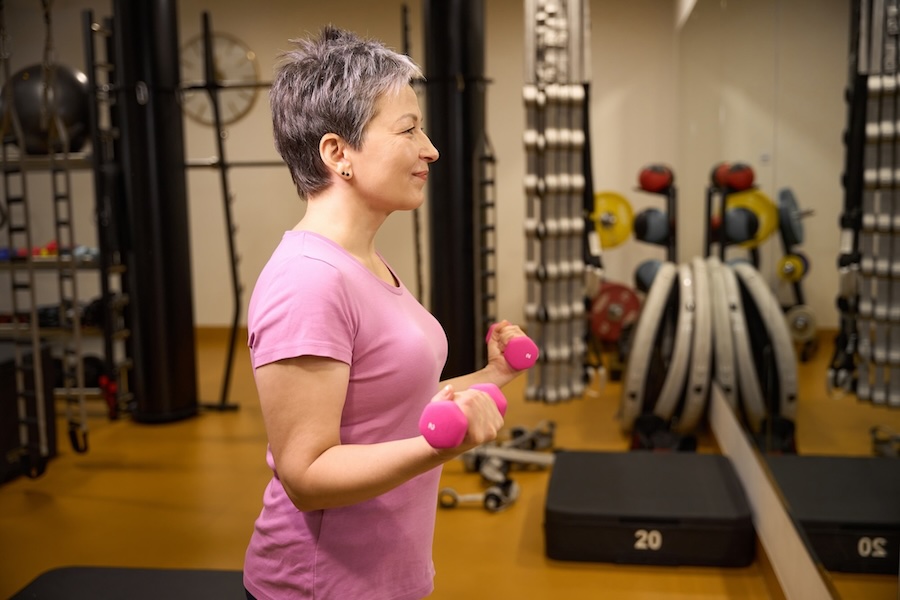Fitness for Survivorship
Strength Training for Survivors - A New Pillar of Recovery for Cancer Survivors
Why lifting light weights does more than restore strength — it rebuilds identity.
For countless individuals navigating the arduous journey of cancer survivorship, the path to recovery often extends far beyond the final chemotherapy session or radiation treatment. While medical advancements have dramatically improved survival rates, the lingering physical toll—muscle loss, bone density decline, and profound fatigue, can profoundly impact quality of life. However, a growing body of evidence, championed by experts and embraced by survivors, points to a powerful, yet often overlooked, intervention: strength training.
Once viewed with caution, the strategic application of resistance exercises is now being hailed not just for its physical benefits, but for its profound psychological impact, helping survivors reclaim their bodies and rebuild their identities. "Why lifting light weights does more than restore strength, it rebuilds identity," states a recent document circulating among fitness and medical professionals.
The debilitating effects of cancer treatments like chemotherapy and hormone therapy can leave patients feeling diminished, both physically and mentally. Muscle wasting, significant weight fluctuations, and a heightened risk of osteoporosis are common adversaries. Yet, strength training, when implemented safely and progressively, has demonstrated a remarkable capacity to reverse these effects.
Expert Consensus and Tangible Benefits
The ACSM Roundtable on Exercise and Cancer, a leading authority in the field, recommends a structured approach: two to three resistance sessions per week, meticulously targeting all major muscle groups. Crucially, these exercises are adapted to accommodate individual comfort levels and recovery phases, ensuring safety and efficacy.
The benefits are manifold and far-reaching:
- Restoration of Lean Muscle Mass: Counteracting the catabolic effects of treatment, strength training helps rebuild and maintain vital muscle tissue, improving overall strength and function.
- Bone Fortification: Particularly critical for those undergoing hormonal therapy, which can accelerate bone density loss, resistance exercises exert beneficial stress on bones, promoting their strengthening and reducing fracture risk.
- Improved Metabolism and Posture: A more robust muscular system enhances metabolic rate, aiding in weight management and energy levels. Concurrently, strengthened core muscles contribute to improved posture, alleviating common aches and pains.
- Reduced Risk of Lymphedema: When performed progressively and safely, strength training has been shown to decrease the incidence and severity of lymphedema, a common and often debilitating side effect of cancer treatment.
Empowering Moves for a New Beginning
For those ready to embark on this journey, a range of accessible and effective exercises can form the foundation of a recovery program. These include:
- Wall Push-ups: A modified push-up that builds upper body strength with reduced strain.
- Seated Resistance Band Rows: Targets back muscles, improving posture and pulling strength.
- Body-weight Squats to a Chair: Strengthens lower body and improves functional movement.
- Light Dumbbell Shoulder Presses: Builds shoulder strength and stability.
- Side Bends and Gentle Planks: Essential for developing core stability, crucial for overall balance and injury prevention.
Technology is also playing a role in personalizing these programs. Apps like Bodyby.AI, for example, offer adaptive modifications, automatically scaling intensity based on individual fatigue levels and range of motion, making strength training more approachable and safer for survivors.
As one expert aptly put it, "Strength training after cancer isn’t vanity, it’s vitality. It gives survivors back the confidence treatment can take away.” In a world where cancer can strip away so much, the simple act of lifting a weight, however light, can become a profound statement of resilience, a tangible step towards rebuilding not just muscle, but a renewed sense of self. The message is clear: for cancer survivors, strength training is not merely an exercise regimen; it is a powerful tool for holistic recovery, offering a path to renewed confidence and a vibrant future.








